
By ARAS TOKER
Analysis on peer accountability focused community building efforts in making lifestyle changes through digital therapeutic programs
Before we jump ahead to the medicine piece, what the heck does a community even mean? In the past, communities were more likely associated with a group of people living in the same physical location such as a neighborhood, school, or a town. I remember my neighborhood soccer community very well, for instance. Instead of being born into or trying to fit in, community is something we choose for ourselves and express our identities through. With the advancement of accessing the high-speed internet globally, today’s community has no physical or geographical boundaries.
Community builder Fabian Pfortmüller brilliantly explains the difference between communities and other groups. He asserts that unlike project teams or companies who are optimizing for external purposes (collective goals); communities optimize for internal purposes (the relationship and the shared identity). His definition of a community deeply resonated with me and the communities that I had the opportunity to build.
Caring and Belonging
From my own community building experiences, I truly believe that caring relationships between members and a shared sense of belonging are the two main components that separate a tight-knit community from an average one. The members actually give a damn about each other. When people care about each other, they develop trust. According to Pfortmüller trust unlocks collaboration, sharing, support, hope, safety and many more intangible emotions.
Dan Buettner, a National Geographic Fellow and New York Times bestseller author, has studied the health habits of people who live in “Blue Zones” — 5 regions of the world where people live far longer than the average. He noted that a sense of community, belonging and positive friendships are some of the most common themes in the Blue Zones.
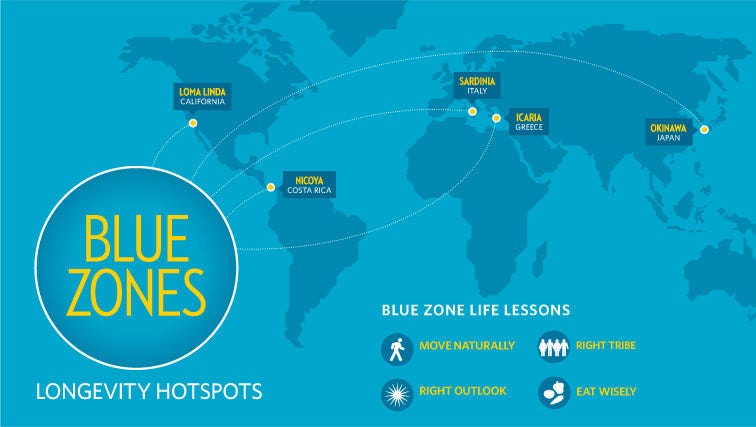
In this fascinating research study the world’s oldest people chose social circles that supported healthy behaviors and believed that they have to be in the “right tribe” to achieve a long lasting fulfilling life. Specifically in Okinawa, Japan, one of the Blue Zones, the citizens created this concept called moai — groups of 5 friends that committed to each other for life. Okinawans were so forward thinking about their health and wellbeing that when a child is born they make sure their baby has a group of five accountable friends who offer social, logistic, emotional and even financial support for a lifetime. This incredible group of islanders certainly fit the definition of a caring community with a sense of belonging.
💡What if moai concept was replicated in online patient communities?
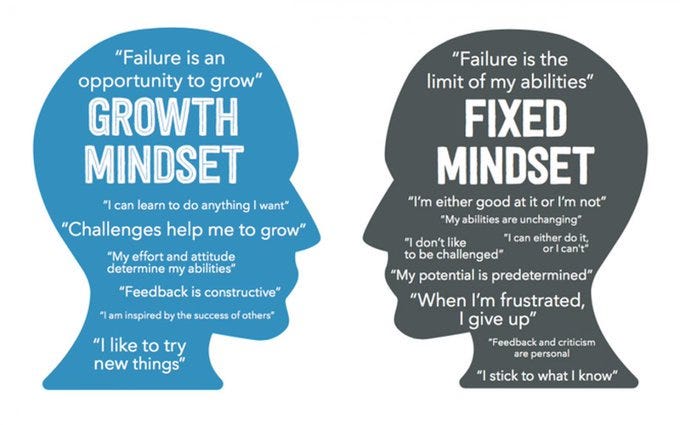
Growth Mindset
Let’s now look at forming sustainable community practices to achieve long lasting habits. One of the hardest things to change is our behaviors and our overall lifestyle. We all know that we should exercise, not eat junk food, instead eat healthy meals, do mindfulness practices and other healthy regimens. But most of us don’t. At least not for a long time. Why do you think that is?
I am not a behavior scientist nor a psychologist so I am only going to answer that question from my own experience as a person that reversed a chronic condition and someone who built and led patient communities. I believe a majority of the people lack a growth mindset — a term coined by Stanford psychologist Carol Dweck, who describes it as “people believing that their most basic abilities can be developed through dedication and hard work”. General population has a fixed mindset where they believe their basic qualities, like their intelligence or talent, are simply fixed traits. They spend their time documenting their intelligence or talent instead of developing them.
I have been keen on bringing a growth mindset mentality into the communities that I have been building and I believe when a person recognizes their self-perception, makes the mindset shift, then they will truly start their behavioral change journey. When a healthcare community is built with a growth mindset from the ground up, members will know conceptually that they are in an iterative process to improve their lives and will redesign their life to reach optimal health with the support of their community members.
Community as Medicine
The power of a vibrant, generous, and a caring community with a growth mindset is empowering for its members.
I believe community can be medicine and should be treated as medicine for the folks that are struggling with chronic physical and mental conditions.
Part of the growth mindset and further developing ourselves we have to have a mindset shift on how conventional medicine, by itself, is not enough to get us healthy. Instead, we should realize that our body is interconnected and treat the root cause of our conditions, not just the symptoms.
This is a special time to be in health tech because there are so many incredible digital therapeutic companies that are leading the way on prescribing medicine digitally. As a healthcare entrepreneur and someone who has worked with digital therapeutic startups I have always believed in the power of utilizing community as a source of support, enthusiasm and empowerment. I am passionate about experimenting the dynamics of the community (the human connection) on how it can lead to better care and health outcomes.
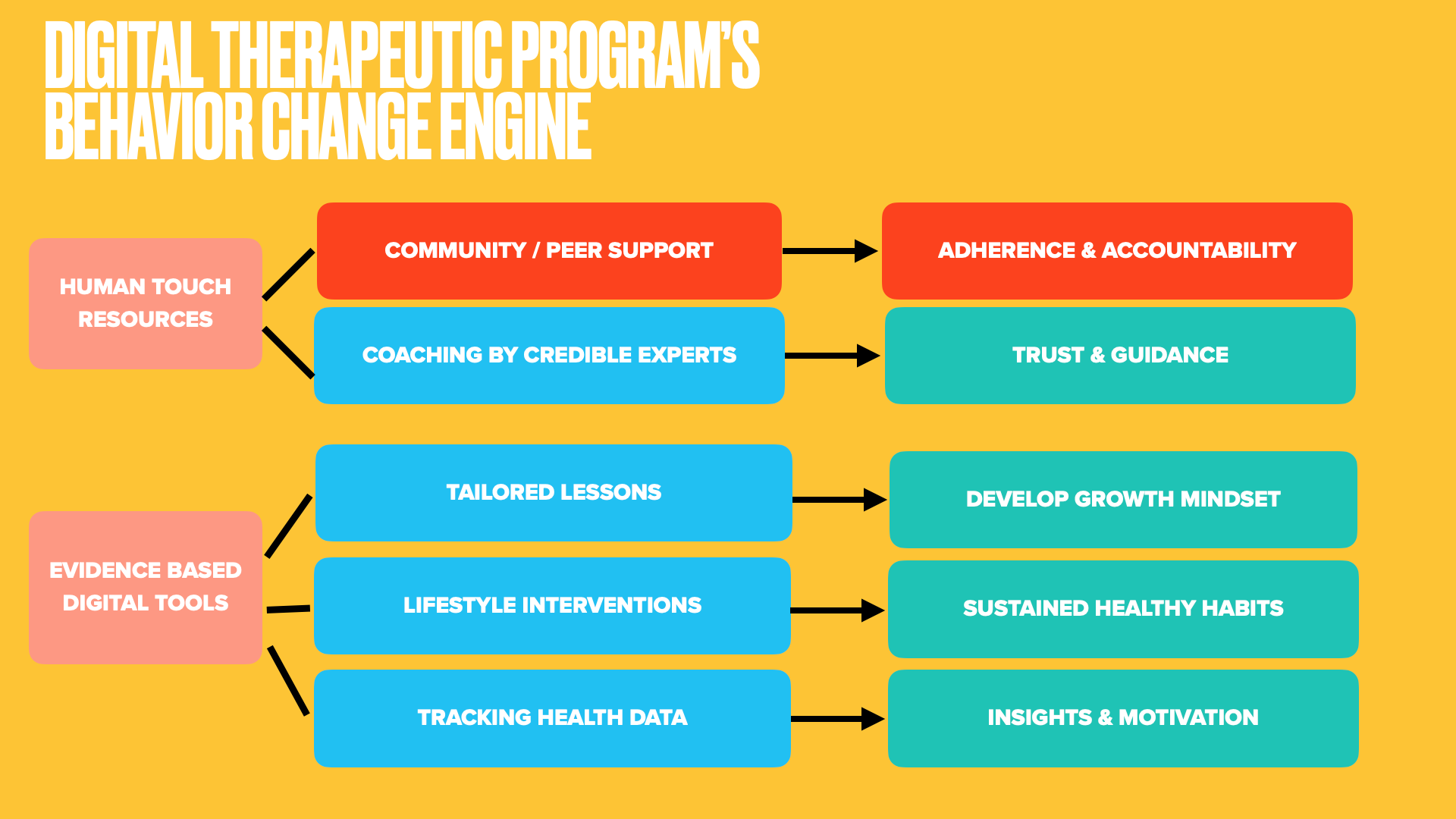
Community -> Adherence Layer
Many of the digital health interventions focus on having a credible expert — a registered dietitian, licensed therapist, certified health coach etc. — to be the main point of contact for their patients to liaise with. Many of these interventions are tech-based and self-guided so we certainly need a human touch to assure that the program is viable and they can reach out to their “coach” at any time through in-app communication. I’m all for coaching and it is a necessary human touch resource.
Despite the potential of digital interventions, concerns remain regarding users’ engagement, as low engagement is associated with low adherence rates, high attrition, and suboptimal exposure to the intervention, according to a consortium research study.
If we can’t solve the engagement and adherence problem I don’t think we’ll have a sustainable digital therapeutic solution.
A “coach” will be a great guidance to patients and will address barriers to help people manage their chronic conditions. Though, to solve the engagement problem I believe the missing piece in this behavioral change engine is the community layer that will offer accountability amongst peers and will keep each other committed to make sustainable lifestyle changes. Only a handful of digital therapeutics companies have a proper community that is actively working on keeping patients engaged and accountable via their peers.
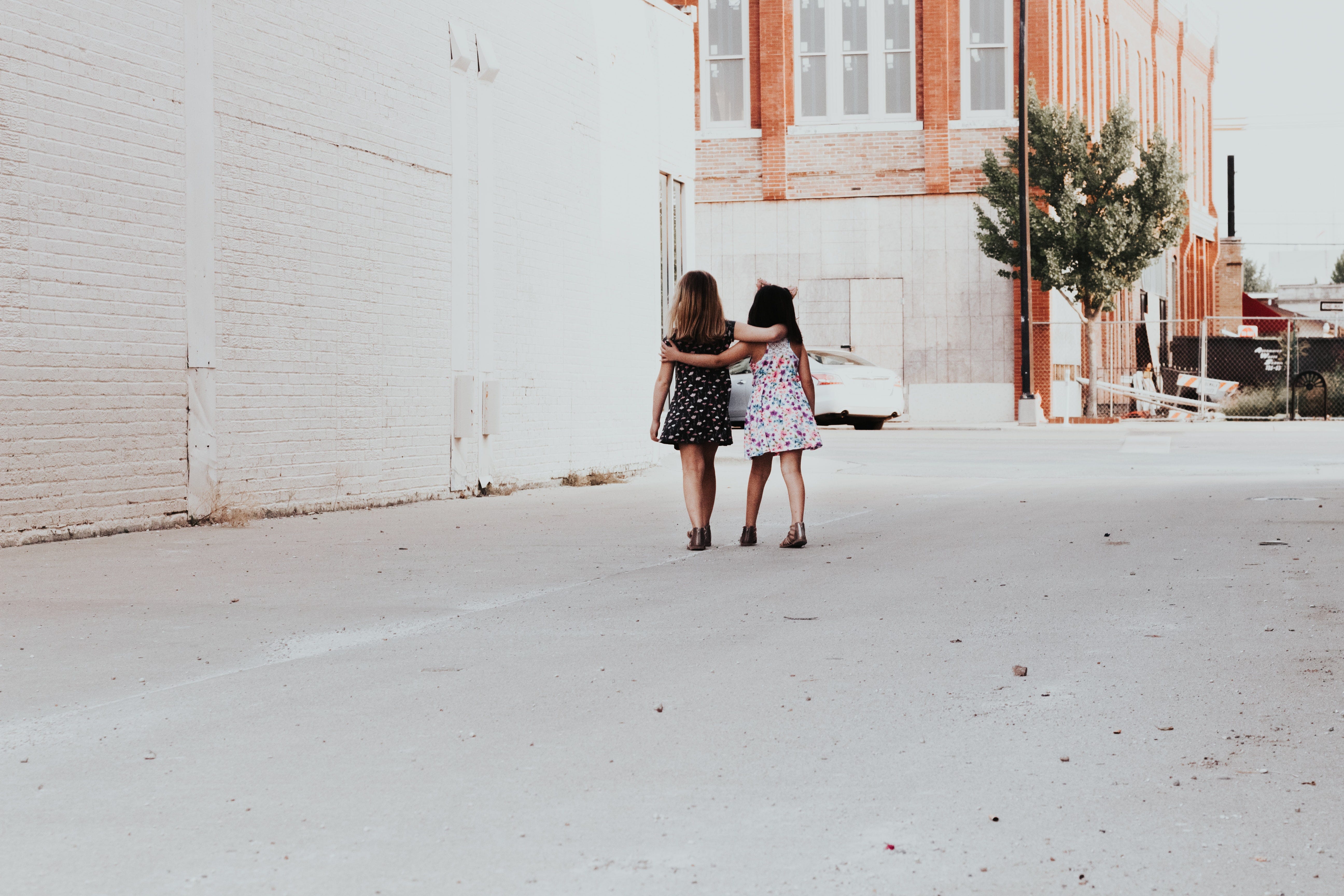
Peer Accountability
It is more powerful and sticky to have an accountability partner that has a similar condition like you, checking on you to see if you are still onboard. It is different than a “coach” pinging you through a push notification. Imagine you had a rough day feeling burned out and you don’t feel the energy to work out even though your “coach” reminded you earlier that it is part of your routine.
In the same scenario, now picture yourself where you get a text from your accountability peer — someone with a similar condition you were matched with in the beginning of the program — asked you if you have kept your commitment of working out today. You asked her whether she has kept hers and she said yes. At that very moment, you are more likely to shift your mindset, begin your workout and keep your commitment to her and to yourself. That’s the natural human psychology that has been observed with many other successful accountability partnership led organizations, Alcoholic Anonymous (AA) being the oldest and the most recognized one.
Measuring Hypothesis
Success metrics of AA have shown that 75% of their regular attendees have reached sobriety after a year. Speaking about success metrics, I had a chance to measure this hypothesis of 1-on-1 peer accountability increasing adherence to an agreed lifestyle change regimen. I had the pleasure of leading various patient communities such as an autoimmune focused group for my own startup, Synch, that I co founded, and as recently as leading gut health enthusiasts for a digital therapeutic startup, Vivante Health. We had tested multiple versions of accountability partnership including micro groups of five gathering on a weekly basis to discuss a relevant health related topic. Remember the moais from Okinawa? We tried to replicate that exact effort on our chronically ill population.
I was able to reverse my own autoimmune condition (Crohn’s Disease) by making long lasting lifestyle changes, working closely with an integrative doctor, and having my own informal peer support group that carried me to the finish line. I felt the urge to better design this hotchpotch effort and tested my peer support ideas with the members of our community at Synch. We gathered cohorts of members with a specific autoimmune condition over a weekly zoom call chatting about a relevant topic. We measured not only weekly attendance trends and repeating members but also asked members to see if they would like to be matched with an accountability partner and 90% said yes and stayed active after signing up!
A Successful Experiment
An effective test that I was able to measure for 1–1 accountability partnership was at Vivante’s gut health community, where I created a private subgroup under our community platform to measure the efficacy of peer commitment. I matched our community members that joined our private group with the root causes of their gut related condition. In one case, I matched two research minded members that were complaining about a “leaky gut” where their intestines were permeating foreign materials into their bloodstream.
I simply introduced them through our platform and talked about the guidelines of our subgroup — Accountability Peers. Not only they kept each other responsible but they also organically met every Friday to support each other and talk about how they can improve their overall health including emotional and mental wellbeing. That was Community as Medicine in action, where two people from completely different backgrounds and locations work together to better their mental and physical health by checking on each other and keeping themselves accountable. Just like centennials did in Blue Zones.
“Community can exert a measurable and ongoing influence on your health behaviors in a way that a diet never can”
Daniel Buettner, NatGeo Fellow, Founder of Blue Zones
Accountability 2.0 — Doing Tiny Interventions TOGETHER
Up until now I talked about the way I successfully experimented the Community as Medicine concept on my own recovery, and on a couple of the patient communities that I built. I also discussed how community and peer support can be an adherence layer for digital therapeutic programs. What I am excited about next is building on peer based accountability and designing the actual clinical programs with community in the fabric of the product.
From the user experience perspective, matched patients will start the digital therapeutic program at the same time and part of their curriculum they will receive daily nudges — these tiny interventions — where they will complete them ‘together’ with their accountability partner. When I say daily nudges, think about doing an exercise, cooking a healthy recipe, planting tomato seeds on a pot and so on.
Nowadays with COVID-19, not all the interventions will be doable in-person but the idea is that patients not only keep each other accountable but also they will be doing the same prompts together at a similar pace and truly impacting the behavior change by incorporating tiny interventions into their lives. Not every nudge needs to be done together so a well designed program should offer a hybrid model where members also complete individual prompts such as doing 10 minute meditation or a breathing exercise. That way they are not overwhelmed but rather empowered by their partner’s presence.
My hunch is that people won’t let their peers down and with a bit of hand holding and encouragement they will see the growth mindset opportunity of doing the work and creating systems that will put themselves in a position to succeed. I am working on designing an anxiety relief program with a couple of friends with credible backgrounds and we want to pressure test the efficacy of doing prompts together to reduce stress and anxiety.
Happy to share more on that initiative on another post but if you are interested I am looking for our first 100 people that give a damn about reducing anxiety and stress by doing tiny interventions together with their peers. You can remain anonymous in the community if you choose so. If this topic gets you excited please reach out to me via Linkedin.
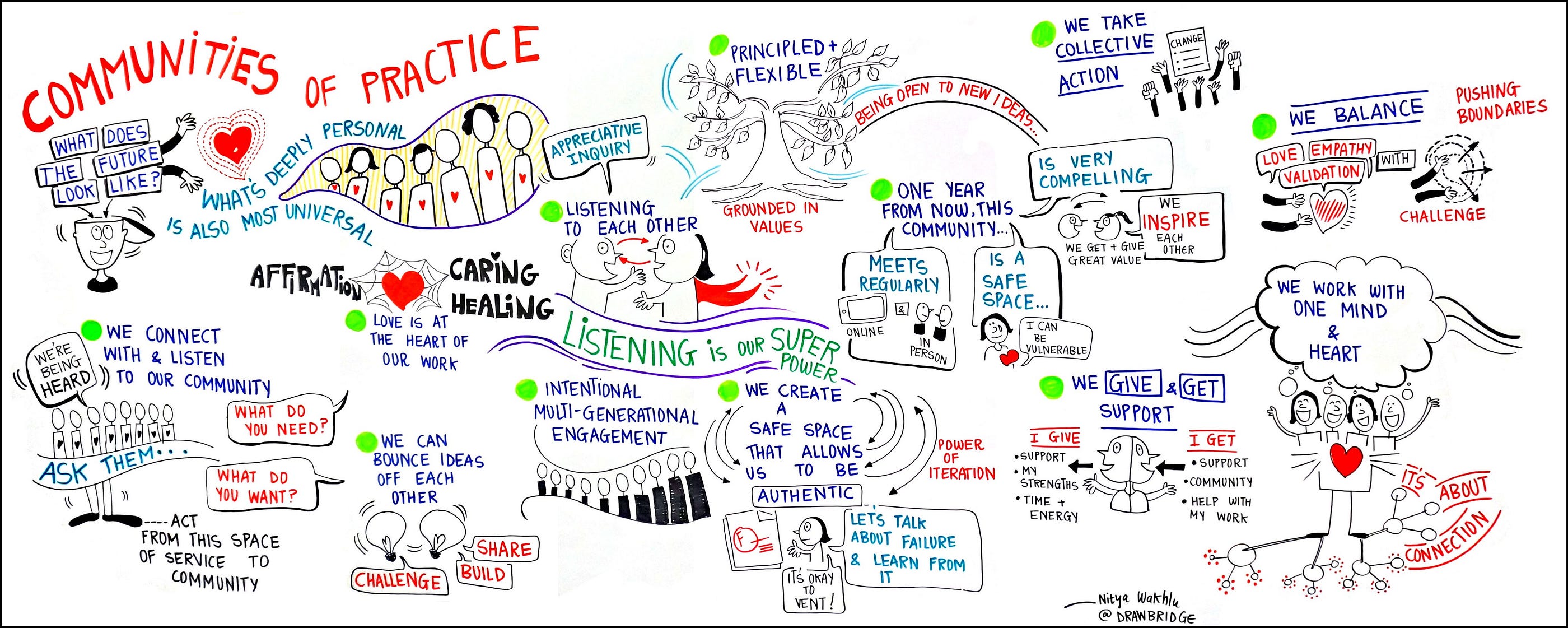
Community of Practice
To summarize the power of community I want to briefly talk about this concept called community of practice. A community of practice is a group of people who share a concern or a passion for something they do, and learn how to do it better as they interact regularly. This definition reflects the fundamentally social nature of human learning. Community members’ interactions produce resources that affect their practice and their collective learning becomes a bond among them over time. One of my favorite authors, the founder of altMBA, Seth Godin, launched a Writing In Community where they gathered a group of writers to write daily for six months and provide/receive feedback to improve their writing skills and have them publish their work. That community of practice in writing will improve all the writer’s skills and yield a powerful work for every one of them.
Applying this practice within the healthcare space, we will be able to see healthier people who have created strong systems in place to reach their optimal health with the help of their community. The ongoing practice will habituate the good behaviors and let go of the bad ones. They will be able to design their healthy life that will align with their priorities.
Final Remarks
I am keen on utilizing Community as Medicine in my projects to help chronically ill folks not only get a sense of support but also an actionable outlet to manage their conditions. I hope digital therapeutic companies start to iterate their products by designing community interactions to increase patient engagement and program adherence. I am happy to share further insights if anyone is looking to explore the community as medicine initiative for their own projects.
Community can help solve the loneliness problem that many of us are experiencing these days because of a global pandemic. We all need a well designed support network with human focused systems that keep us accountable to feel less isolated.
A caring community with a shared purpose and a sense of belonging can be a medicine for a physical, mental and an emotional health if we choose it to be.
Aras Toker is the co-founder of Peace of Mind, a digital therapeutic program designed to reduce anxiety by doing daily interventions together with peers.
This article originally appeared on Medium here.
Categories: Uncategorized









